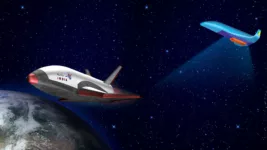India launched its maiden indigenous winged Reusable Launch Vehicle (RLV) from Sriharikota spaceport in Andhra Pradesh on Monday.
The RLV Technology Demonstration (RLV-TD), that is ultimately aimed at putting satellites into orbit around earth and then re-enter atmosphere, was carried up on a solid rocket motor.
The nine-metre long rocket weighs 11 tonnes. Very similar in its looks to the US space shuttle, the the double delta-winged RLV-TD being experimented is a scale model which is almost 6 times smaller than the final version.
The 6.5 m long aeroplane-like structure weighs 1.75 tonnes and will be hoisted into the atmosphere on the special rocket booster.
After launch from the Sriharikota spaceport, about 100 km from Chennai, it will be glided back onto a virtual runway in the Bay of Bengal. The vehicle will reenter the atmosphere after reaching a height of over 70 km.
The mission is known as the hypersonic flight experiment and is expected to last about 10 minutes.
RLV-TD ISRO’s First Winged Flight Vehicle
Indian Space Research Organisation (ISRO) Chairman, Kiran Kumar, while explaining the importance of the experimental RLV said it is essentially an attempt by India to bring down the cost of making infrastructure in space.
If reusable rockets become a reality, the cost of access to space may come down by 10 times, he said.
The government has invested Rs 95 crore into the RLV-TD project.
Kiran Kumar, Chairman ISRO
We are designing for the first time a winged body, which will come back from space. It will be carried up on a solid rocket motor. In addition, this is the first of a series of experiments and we still have a long way to go till we reach the actual RLV, which will give us a tremendous capacity in terms of launching at a very low cost.







